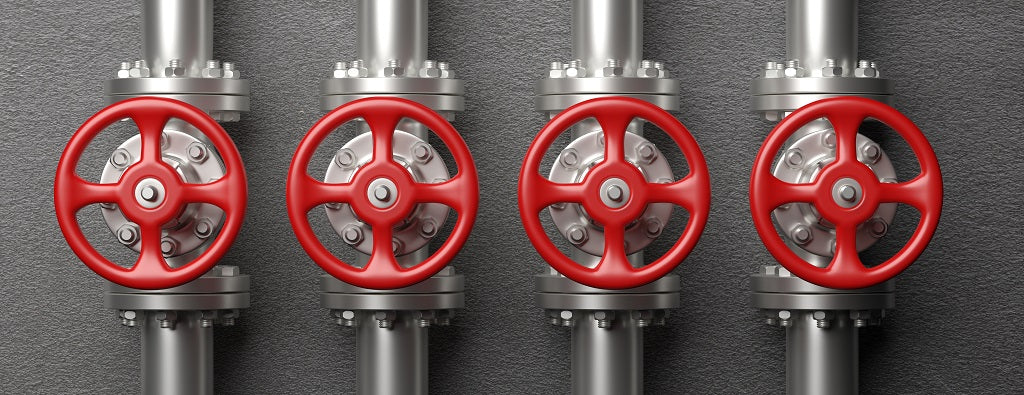
Maximize Power Financial Savings and Convenience With Advanced Building Automation Controls
In the realm of modern-day design and center monitoring, the integration of innovative structure automation controls stands as a critical improvement. By utilizing the power of automation, structures can adapt, respond, and progress in ways that were once unthinkable.
Energy Performance Conveniences
Power effectiveness benefits can dramatically lower power consumption and operational expenses in structures. Energy-efficient systems, such as innovative building automation controls, can optimize the use of resources like illumination, heating, and air conditioning, leading to lower energy costs over time.
In addition, boosted energy efficiency can prolong the life expectancy of structure equipment and systems. By operating a lot more efficiently, cooling and heating systems, lighting fixture, and other structure parts experience less deterioration, leading to decreased maintenance and replacement costs. Furthermore, energy-efficient structures commonly command higher property worths and rental prices, giving lasting economic benefits to owners.
Moreover, energy performance can boost owner convenience and efficiency. Correctly managed interior settings with optimal lighting and thermal problems produce an even more favorable and pleasurable workspace, causing boosted employee contentment and efficiency. Overall, the energy performance benefits connected with innovative structure automation controls are multifaceted, encompassing price savings, environmental stewardship, and passenger health.
Boosted Comfort Control
Enhancing comfort control in structure environments needs an innovative integration of innovative automation systems for ideal passenger health. By utilizing advanced building automation controls, facilities can tailor the indoor environment to satisfy the details demands and choices of owners. These systems make it possible for precise regulation of illumination, temperature, and air flow, developing a comfy and effective environment. Resident fulfillment and efficiency are carefully linked to thermal convenience, making it vital to have systems in area that can adapt to altering problems in real-time.
By incorporating these sophisticated controls, structures can not only improve convenience but additionally enhance energy efficiency by optimizing system procedures based on actual occupancy and use patterns. Eventually, focusing on resident convenience via advanced automation systems leads to a much more delightful and healthier indoor atmosphere.
Functional Performance Improvements

Additionally, the implementation of real-time monitoring and analytics tools enables building drivers to recognize energy ineffectiveness and functional abnormalities promptly. By constantly keeping track of power use patterns and system efficiency metrics, adjustments can be made in real-time to enhance power usage and make certain peak operational efficiency. control valves. Furthermore, integrating need response techniques right into structure automation controls can better enhance operational effectiveness by dynamically changing power use based upon grid problems and rates signals
Indoor Environment Optimization
Reliable interior environment optimization is a basic aspect of building automation controls, ensuring owners' comfort and well-being while making best use of power savings. By using sophisticated sensors and controls, building automation systems can continuously adjust and monitor temperature level, moisture degrees, air high quality, and ventilation to create an optimal interior setting. Keeping regular and comfy conditions not just enhances owner fulfillment but also enhances performance and general well-being.
Interior environment optimization likewise plays a critical function in energy performance. By fine-tuning home heating, cooling, and ventilation systems based on real-time data and tenancy patterns, developing automation controls this article can significantly lower energy intake - control valves. Executing approaches such as demand-controlled ventilation and thermal zoning can aid reduce power waste while guaranteeing that each location of the building obtains the necessary conditioning.

Lasting Setting Development
Building automation controls not only enhance indoor environment problems for energy efficiency and passenger convenience however likewise lay the structure for creating a lasting setting with calculated management of resources and systems. By integrating advanced structure automation innovations, such as sensors, actuators, and intelligent software, centers can keep an eye on and adjust power use in real-time to minimize waste and lower their carbon footprint. These systems enable anticipating upkeep, identifying prospective issues prior to they escalate and maximizing equipment efficiency to boost durability and efficiency.
Additionally, sustainable setting development expands beyond power administration to incorporate water conservation, waste decrease, and interior air high quality improvement. Structure automation controls can regulate water usage, find leaks, and make certain proper waste disposal practices, contributing to total sustainability efforts. Additionally, by managing and monitoring ventilation and filtering systems, these technologies improve passenger health and efficiency while reducing power consumption related to their website cooling and heating operations.
Conclusion
Finally, progressed structure automation manages deal substantial advantages in terms of energy cost savings, comfort control, functional performance, interior climate optimization, and creating a sustainable environment. By carrying out these controls, buildings can achieve ideal efficiency while lowering energy intake and enhancing resident convenience. It appears that making use of innovative automation innovation is important in improving building performance and producing a much more sustainable future.
Energy efficiency benefits can considerably decrease energy consumption and operational costs in structures. In general, the energy efficiency benefits linked with innovative structure automation controls are diverse, including expense savings, environmental stewardship, and occupant well-being.
In addition, integrating demand reaction strategies right into structure automation controls can even more enhance functional effectiveness by dynamically changing energy use based on grid problems and rates signals.
Building automation controls not just maximize indoor environment conditions for energy performance and occupant convenience but additionally lay the foundation for developing a sustainable setting with strategic monitoring of resources and systems.In conclusion, progressed see this page building automation manages deal considerable advantages in terms of energy financial savings, comfort control, functional efficiency, interior environment optimization, and developing a lasting environment.
Comments on “Effective Control Valves: Key Elements for Effective System Management”